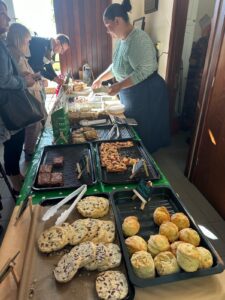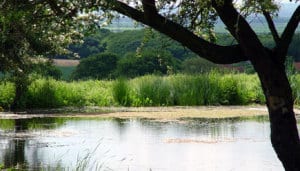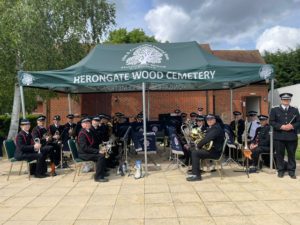We love our Trees at Herongate Wood!
Our Grounds Team have planted over 3000 trees since we opened in 2003.
We now plant between 50 to 60 trees a year on grave plots, and to serve as memorial trees.
When do we plant Trees?
We plant trees during their dormant season, which runs from November to March.
Planting the tree when it is dormant has many benefits to the trees. Winter means there is lots of rain, which helps establish a good healthy root system. The tree also has less competition for water and nutrients, as plant growth slows down during the winter months.
Planting in winter means that when spring rolls around the new tree will have a substantial root system in place.
What kind of Trees do we plant?
We plant young trees (which are also called “Whips”) rather than mature trees.
Older more mature trees are less able to adapt to a new site and survive the planting process, than a small young tree.
All of the trees at Herongate Wood are British native Trees.
Having a diverse woodland full of native British trees is best for the amazing wildlife we have in Herongate Wood.
Where do we plant Trees?
Herongate Wood is divided up into a grid. These grid squares are divided again to make rows of grave plots. There are two types of plot – standard and avenue.
Trees are only planted on selected avenue plots. The trees are either planted at the “head” or “foot” end of the plot, the exact location for the trees location would be dictated by our experienced cemetery staff, and confirmed at time of need.
All plots are no more than 9 feet away from a tree at any point.
If you would like a tree two full avenue burial plots must be purchased. These two burial plots would consist of either two full coffin burials, or two full family ashes plots (this would allow for 8 sets of buried ashes, 4 in each plot).
What happens if we plant too many trees?
If we plant too many trees and allow the site to become overcrowded we would risk losing much beloved trees from the site.
The natural planting scheme we implement lowers the need for us to remove trees in the future.
We may need to cut down and sustainably remove trees during the lifetime of the site to keep the woodland healthy.
Thinning tree numbers is a normal part of woodland management. It happens naturally in woodlands, when trees fall during storms or due to ill-health of the tree.
We want to manage tree loss in a controlled way, rather than allowing nature to take its course. Natural tree-fall would damage other trees, damage grave and be a safety risk for visitors. This is why we may need to cut down and sustainably remove trees during the lifetime of the site.
Overcrowding risks are also one reason that no shrubs or trees are allowed to be planted by families at Herongate Wood. Read about our Suggested Planting List here
Why do we plant Trees?
Trees were the original inspiration for Herongate Wood!
Trees help people and wildlife alike.
There is research backed evidence that shows that being in a wooded area is excellent for peoples mental health. Trees help reduce our cortisol levels and increase our sense of wellbeing.
We believe that the trees at Herongate Wood help support bereaved families by providing a peaceful place for loved ones to be remembered.
Burial Grounds cannot be built on or developed. Herongate Wood will be a greenspace and memorial for the loved ones buried at Herongate Wood forever.
What are “memorial Trees”?
Memorial trees are trees in Herongate Wood that are not on a grave plot.
All our Memorial trees are numbered and we offer tree plaques to be purchased and placed at the foot of the tree.
Memorial trees (when available) are renewable every ten years.
Read about the types of Memorial offered at Herongate Wood here.







